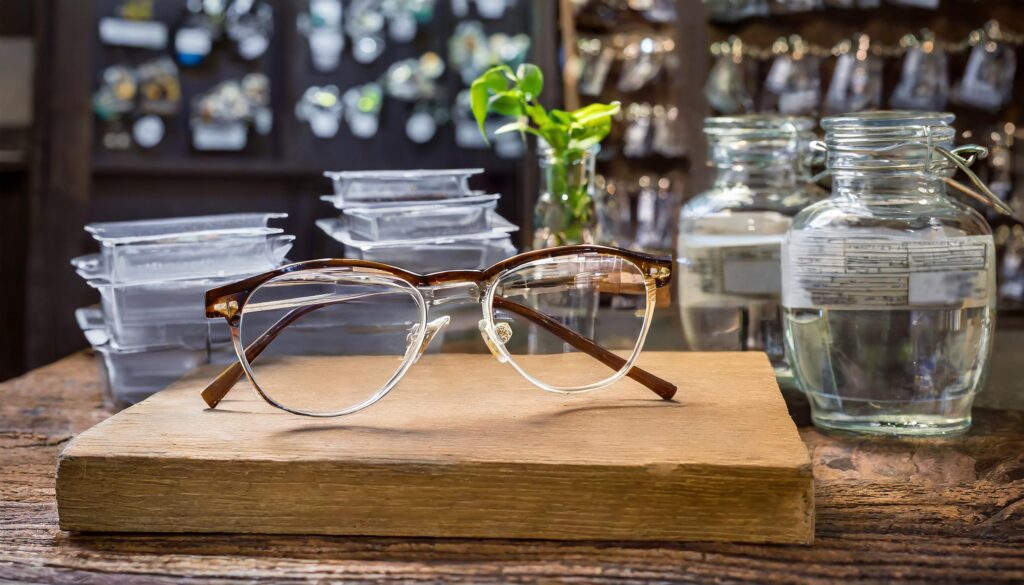1- Introduction
👓 Safety glasses are a necessity in many workplaces, but when you require vision correction, regular safety eyewear isn’t enough, Prescription safety glasses offer the best of both worlds clear, personalized vision and essential eye protection, Whether you’re a mechanic, lab tech, welder, or truck driver, this article will help you understand what to look for and why these glasses matter.
🗂️Table of Contents
2- What Are Prescription Safety Glasses?
🛡️ These specialized glasses combine the functionality of prescription lenses with the durability of industrial safety gear, Designed to protect against impact, flying particles, and radiation (like UV), they are often built using strong materials like polycarbonate, Some are also treated with coatings to reduce fogging and scratching, making them ideal for use in extreme or unpredictable environments.
3- Who Needs Them and Why?
🔍 Anyone who works in a setting where eye hazards are present and also wears corrective lenses needs prescription safety glasses, This includes:
– Construction and factory workers
– Electricians and plumbers
– Landscapers
– Medical professionals
– Drivers exposed to dust, debris, or glare
👉Without proper eyewear, these individuals risk eye strain, blurry vision, and injury, Non-prescription safety glasses worn over standard eyeglasses are often bulky and uncomfortable, making prescription safety glasses a better alternative.
4- Key Features to Look For in Quality Glasses
📌 Not all safety glasses are created equal, Look for these features:
– ANSI Z87.1 certification (mandatory for workplace compliance)
– UV protection, especially for outdoor workers
– Wraparound frames for lateral protection
– Anti-fog and anti-scratch coatings
– Lightweight yet durable materials
👉A good pair will not only protect your eyes but also stay comfortable throughout long shifts or while driving long distances.
5- Understanding ANSI Standards and OSHA Rules
✅ In the U.S. safety eyewear must meet ANSI Z87.1 standards to be deemed suitable for work or hazardous environments, This certification confirms that the glasses can withstand blunt force, remain intact upon impact, and offer side protection, OSHA (Occupational Safety and Health Administration) mandates ANSI-rated eyewear in regulated workplaces, meaning if you’re not wearing the right type, you’re both unsafe and out of compliance.
6- Prescription vs Non-Prescription : What’s Best?
🧾 If you already wear glasses, non-prescription safety eyewear won’t help you see better, While over-the-glasses (OTG) models exist, they are often uncomfortable and may fog more easily, Prescription safety glasses offer clarity without bulk, making them safer and more practical, They allow you to focus on your work without distractions, reduce eye strain, and ensure that your vision remains sharp even under pressure.
7- Frame and Lens Customization Options
📘 You can tailor your safety glasses to your needs:
– Frames: Choose from wraparound, side-shielded, or goggle-style designs
– Lens types: Single vision, bifocal, or progressive
– Coatings: Anti-reflective, photochromic (transition), anti-static, and hydrophobic
👉Materials like Trivex and polycarbonate are recommended for their light weight and superior impact resistance, Many eyewear providers also offer stylish options that don’t look like traditional safety glasses.

8- Shopping Tips and Buyer Considerations
💡 Before you purchase, consider these steps:
– Get an updated prescription from a certified optometrist
– Measure your pupillary distance for accurate lens fitting
– Ensure the product has the ANSI Z87.1 mark
– Ask about warranties and return policies
– Read user reviews for real-world feedback
👉If possible, try them on for comfort and clarity, especially if you’ll be wearing them for extended periods.
9- Maintenance, Storage, and Longevity
🔎 To extend the lifespan of your glasses:
– Clean lenses daily with a microfiber cloth and lens-safe solution
– Avoid using shirt sleeves or paper towels which can scratch coatings
– Keep your glasses in a sturdy protective case when not in use to avoid damage or dirt buildup
– Periodically check for loose screws or worn-out nose pads
👉With proper care, prescription safety glasses can last several years, saving you from frequent replacements and reducing long-term costs.
10- Frequent Mistakes When Buying Safety Glasses (And How to Avoid Them)
⚠️ Many users make errors that reduce the effectiveness of safety glasses:
– Buying non-certified models
– Ignoring lens coatings
– Choosing poor-quality frames that break easily
– Skipping professional fitting
👉Avoid ‘one-size-fits-all’ products if you wear bifocals or progressives these require customized fitting for optimal clarity and safety.
11- Final Thoughts
🦺 Investing in prescription safety glasses is an investment in your personal safety and work efficiency, From construction to driving, they provide consistent clarity, comfort, and protection, With a variety of lens types, coatings, and frame styles available, it’s easier than ever to find a pair that matches your needs and preferences.
➡️ Learn how :
safety Glasses for Drivers: Are They Necessary?
📌 Internal Link:

